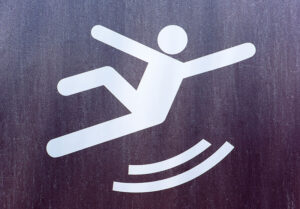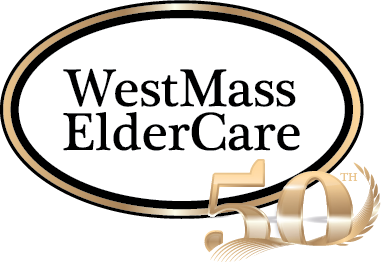 As we navigate the journey of aging, it’s important to understand all of the challenges that come with it, and one of the most significant concerns for older adults is the increased risk of falling. As we age, our bodies undergo many changes, making us more prone to injuries from falls. Falling can have severe consequences, not only physically but emotionally, leading to broken bones, head injuries, and a loss of confidence in one’s ability to remain independent.
As we navigate the journey of aging, it’s important to understand all of the challenges that come with it, and one of the most significant concerns for older adults is the increased risk of falling. As we age, our bodies undergo many changes, making us more prone to injuries from falls. Falling can have severe consequences, not only physically but emotionally, leading to broken bones, head injuries, and a loss of confidence in one’s ability to remain independent.
Millions of older adults fall each year. In fact, one in four older people falls each year, but less than half tell their doctor. One in five falls causes a serious injury, and falling once doubles your chance of falling again.
However, with proper knowledge and precautions, older adults can significantly reduce the risk of falling and maintain their independence for years to come.
During Falls Prevention Month this September, we focus on how important it is to know the reasons behind why older adults tend to fall. Each reason plays a role in raising the risk, and by identifying and addressing them in advance, we can take significant steps towards safeguarding our well-being and maintaining a vibrant, active lifestyle as we age.
Understanding the Impact of Falls
Falls are not just minor mishaps; they can have severe consequences, especially for older adults. According to the Centers for Disease Control and Prevention (CDC), falls are the leading cause of both fatal and non-fatal injuries among older adults. Many people who fall, even if they’re not injured, become afraid of falling. This fear may cause them to cut down on their everyday activities, impacting their independence. When a person is less active, they become weaker and this increases their chances of falling again.
The financial impact of falls on individuals, families, and healthcare systems is also high. The CDC estimates the yearly medical costs for falls-related injuries to be more than $50 billion.
For individuals, falls can lead to many medical expenses, including hospitalization, diagnostic tests, surgeries, medications, and rehabilitation services. Depending on the severity of the fall-related injuries, the cost of treatment can quickly add up and place a significant financial burden on older adults and their families.
For some older adults, falls can result in prolonged hospital stays or the need for long-term care facilities, which can be financially challenging. Even with insurance coverage, co-pays, deductibles, and out-of-pocket expenses can be overwhelming, potentially affecting retirement savings and older adults’ financial security.
Beyond the individual financial impact, falls also strain healthcare systems and resources. Fall-related injuries contribute to increased emergency department visits, hospital admissions, and outpatient care. Healthcare providers and facilities face higher costs associated with treating fall-related injuries, taking away resources from other critical healthcare needs.
Factors Contributing to Falls
Several factors can contribute to the likelihood of falling as we age, including:
- Muscle Weakness: As we age, there is a natural decline in muscle mass and strength. This muscle weakness affects various muscle groups, including those responsible for maintaining balance and stability. We rely on our muscles to support our body weight, shift our weight during movements, and react quickly to prevent falls. When muscles are weak, the ability to respond effectively to unexpected changes in balance is compromised, increasing the risk of falls.
- Balance Issues: The body’s sense of balance relies on input from the inner ear, vision, and the body’s awareness of its position in space. Age-related changes can affect the function of the inner ear and reduce spatial awareness. This can lead to balance issues, making it challenging for older adults to maintain steadiness when walking or performing daily activities, increasing the risk of falls.
- Medications: Certain medications can have side effects that affect coordination, or cause dizziness or lightheadedness. Common medications include sedatives, tranquilizers, some antidepressants, and medications for blood pressure. These side effects can affect an older adult’s ability to maintain steady movements and increase the likelihood of falling.
- Vision Changes: As we age, changes in vision are common. These can include problems with seeing things clearly, trouble judging distances, and difficulty adjusting to different levels of light. These vision issues can make it harder for older adults to tell how far things are, spot obstacles, or notice uneven surfaces. This puts them at a higher risk of tripping and falling.
- Foot Pain or Poor Footwear: As we age, our feet undergo natural changes, such as a decrease in fat padding and reduced flexibility in tendons and ligaments. These changes can lead to foot pain and discomfort, affecting our ability to walk steadily. When older adults experience foot pain, they may change how they walk, making them more prone to tripping or stumbling. Moreover, poor footwear choices, such as wearing show with worn-out soles, not enough support, or poor fit, can make foot pain worse and compromise balance. Shoe that don’t fit well can also cause blisters, calluses, and discomfort, leading to reduced ability to walk and an increased risk of falls.
- Environmental Hazards: Home environments can pose serious fall hazards for older adults. Slippery floors, loose carpets, and poor lighting are common dangers. Cluttered walkways and poorly placed furniture can also block safe movement, leading to accidents, trips and falls.
- Chronic Conditions: Certain chronic health conditions, such as arthritis, Parkinson’s disease, multiple sclerosis, or stroke, can affect mobility and increase the risk of falling. These conditions may cause muscle weakness, impaired balance, or difficulty coordinating movements, which increase the risk of falls.
- Vitamin D Deficiency: A vitamin D deficiency (that is, not enough vitamin D in your system) can be a contributing factor to falls among older adults. Vitamin D plays an important role in keeping your bones healthy, as it aids in the absorption of calcium, which is essential for strong bones. A deficiency in vitamin D can lead to bones that are soft and weak, increasing the risk of fractures and falls.
Falls Prevention Strategies
Falls prevention techniques are essential because they help older adults feel stronger and more independent. When they use these techniques, they can feel more confidence in their abilities, stay active, and keep doing the activities they enjoy.
Falls prevention strategies also help lessen the strain on healthcare systems and reduce healthcare costs associated with fall-related injuries. As the population ages, falls prevention becomes increasingly important in maintaining the overall health and well-being of older adults.
Here are strategies you can use to help prevent falls:
- Physical Activity: Regular physical activity helps strengthen muscles, improve balance, and maintain flexibility. Exercises like walking, swimming, tai chi, and yoga can improve coordination and stability. Strong muscles and improved balance reduce the likelihood of losing control during daily activities, making falls less likely to occur.
- Balance Exercises: Balance exercises specifically target improving stability and reducing the risk of falls. These exercises challenge the body’s equilibrium and help older adults maintain control over their movements. By including activities like standing on one leg, using a stability ball, or practicing heel-to-toe walking, older adults can build the necessary balance skills to navigate everyday tasks with confidence.
- Medication Review: Many older adults take multiple medications. Consulting a healthcare professional to review and adjust medications can help minimize potential side-effects and interactions, and reduce the risk of falls.
- Regular Vision Checkups: Age-related changes in vision can make it more challenging to avoid obstacles or hazards. Getting regular vision checkups makes sure any vision problems are quickly fixed with glasses or treatments. When vision is clear, it helps people be more aware of their surroundings and lowers the chances of falling.
- Creating a Safe Environment: Removing loose rugs, securing carpets, and decluttering living spaces can greatly reduce the risk of accidental falls. Installing grab bars in bathrooms and improving lighting in hallways and staircases are other way to increase safety and reduce the risk of falling.
- Wearing Appropriate Footwear: Wearing well-fitting shoes with non-slip soles provides older adults with a stable foundation and reduces the risk of slipping. Proper footwear supports the feet and enhances balance, particularly on uneven or slippery surfaces.
- Using Assistive Devices: For some older adults, using assistive devices like canes or walkers can offer additional support and stability. These devices help to maintain balance and prevent falls, especially during activities in which you need more stability.
- Avoiding Rushing: Rushing increases the likelihood of missteps and accidents. Taking the time to move carefully, especially when transitioning from sitting to standing, or when walking on uneven surfaces, helps maintain control and minimizes fall risks.
- Staying Hydrated: Dehydration can lead to dizziness and weakness, making falls more likely. Drinking enough water throughout the day is essential for maintaining overall health and reducing the risk of falls.
- Regular Checkups: Going for regular medical checkups helps doctors find any health problems that might lead to falls. By finding any issues early, they can treat and manage them properly, reducing the chances of potential fall risk factors.
Conclusion
Falls are not an inevitable part of aging. By taking proactive steps to prevent falls, you can protect your independence and maintain an active lifestyle. Falls Prevention Month serves as a reminder to prioritize your safety and well-being, not just in September but all year round.
Remember, asking for help from family, friends, or healthcare professionals is never a sign of weakness. Embrace the resources available to you, and don’t hesitate to reach out for support. By staying physically active, creating a safe environment, and taking care of your health, you can lower the risk of falls and enjoy your life to the fullest.


 As we navigate the journey of aging, it’s important to understand all of the challenges that come with it, and one of the most significant concerns for older adults is the increased risk of falling. As we age, our bodies undergo many changes, making us more prone to injuries from falls. Falling can have severe consequences, not only physically but emotionally, leading to broken bones, head injuries, and a loss of confidence in one’s ability to remain independent.
As we navigate the journey of aging, it’s important to understand all of the challenges that come with it, and one of the most significant concerns for older adults is the increased risk of falling. As we age, our bodies undergo many changes, making us more prone to injuries from falls. Falling can have severe consequences, not only physically but emotionally, leading to broken bones, head injuries, and a loss of confidence in one’s ability to remain independent.